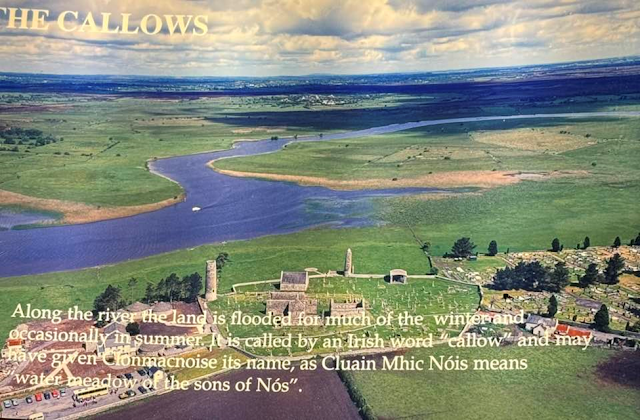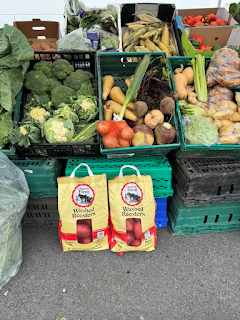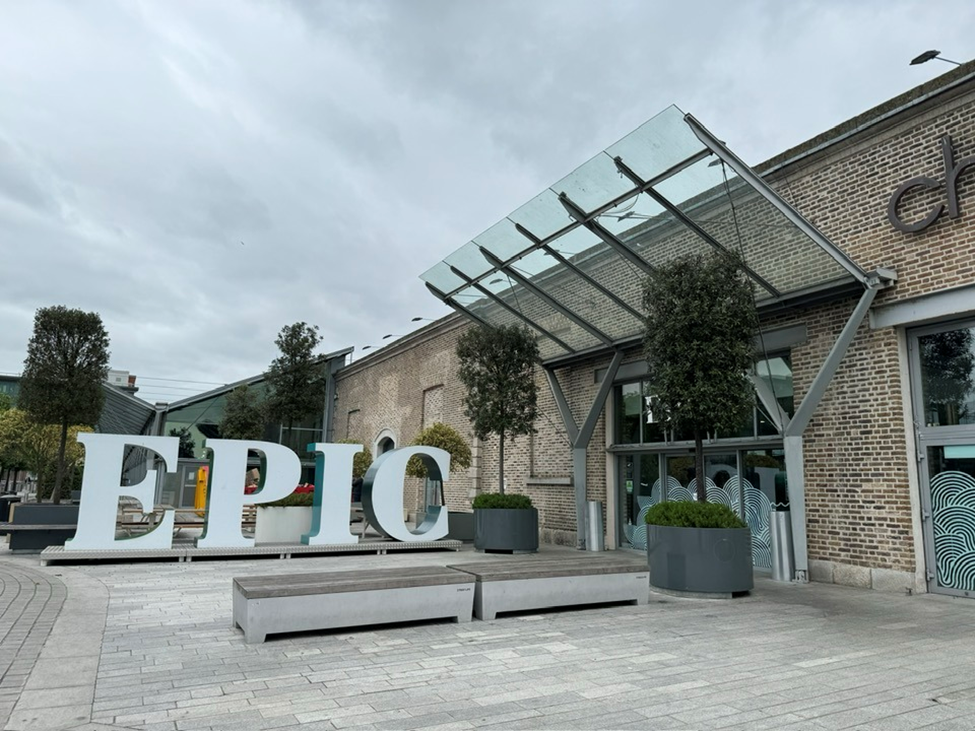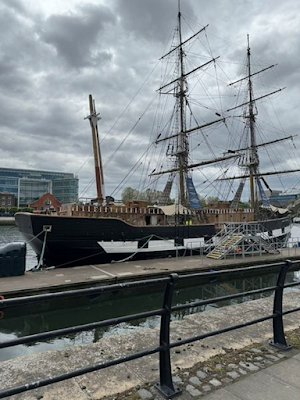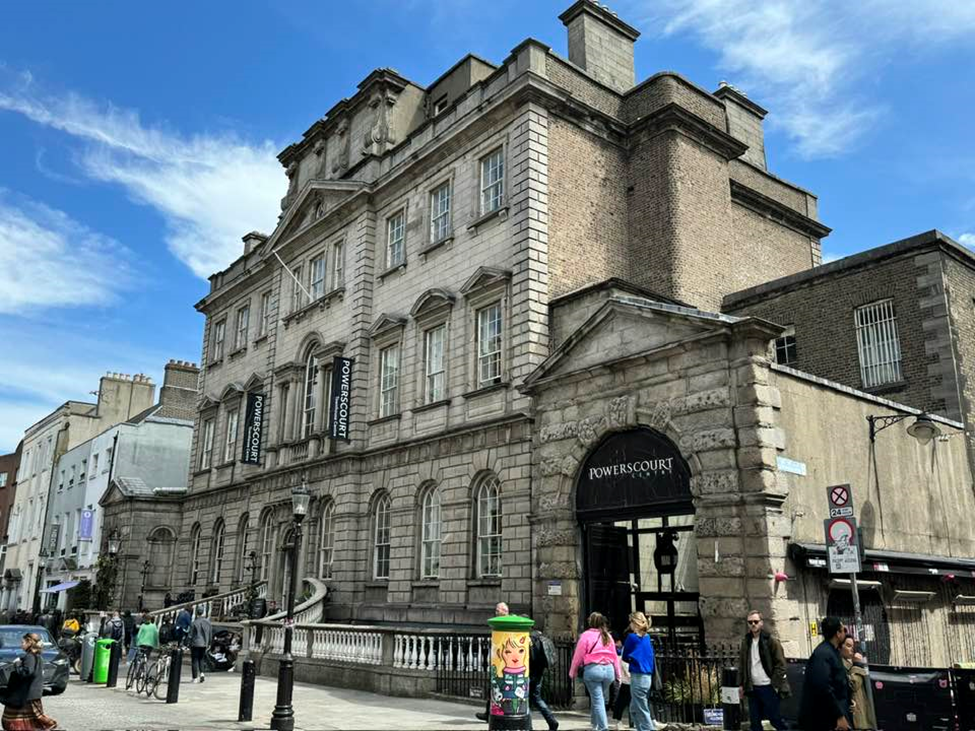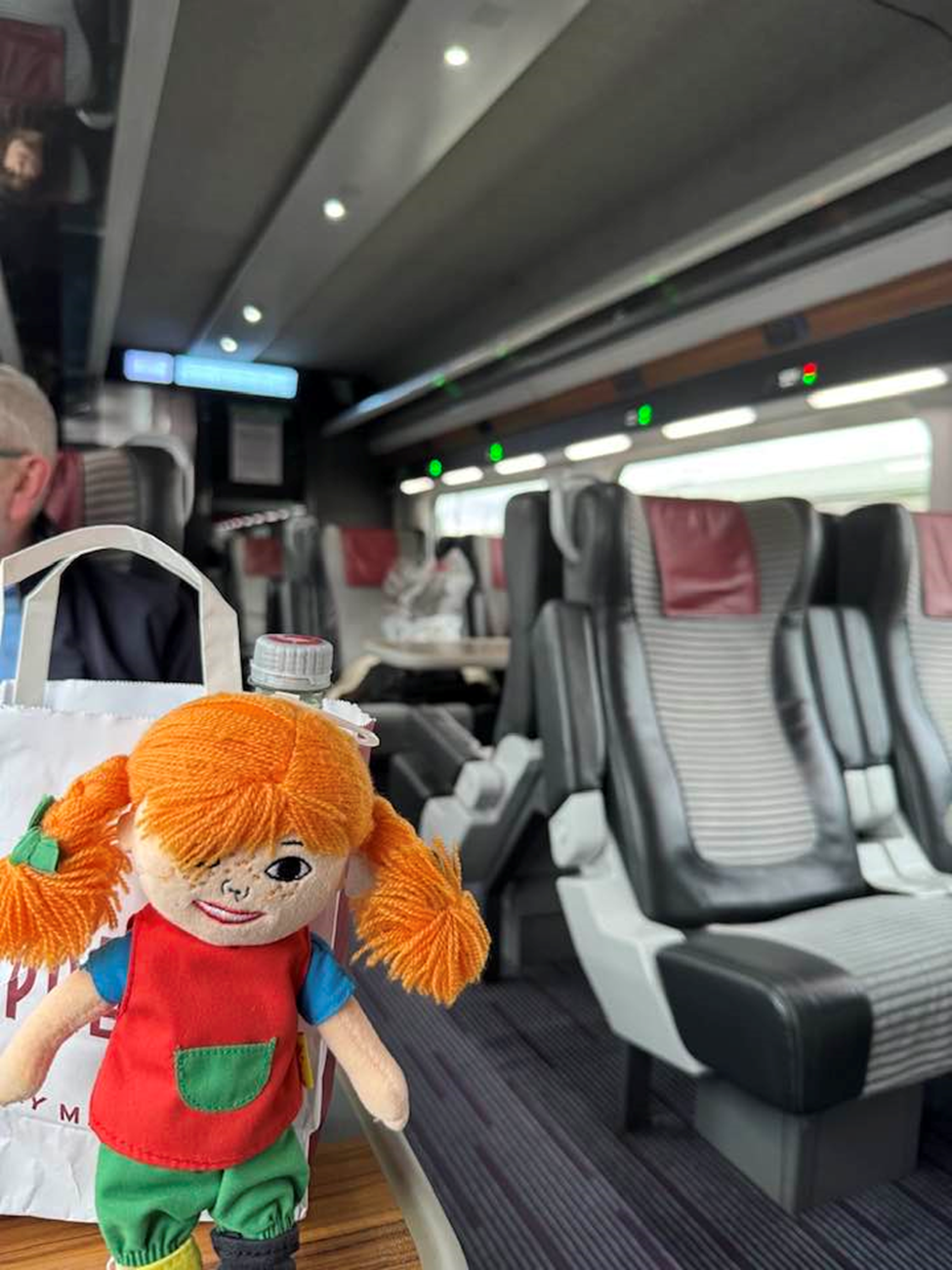IRELAND! All around the Republic of Ireland
May 12
- Guess who is going to Ireland tonight! Awful weather in Dallas meant only 10
minutes to spare from connecting flight. But… nine hours from now, we shall see
if Irish eyes are smiling!
The tour begins – “The Emerald Isle”, organized by Smithsonian Travels.
May 14- DUBLIN - visit to St. Patrick’s Cathedral, which is the National Cathedral of the Church of Ireland, an Episcopal Church, built in honor of Ireland’s patron Saint, Saint Patrick. The building dates to 1220 A.D.
Other items of interest in St. Patrick’s Cathedral, Dublin, are an explanation of risky behavior – – “chance your arm”. (see the explanation, graphic below, and one of our group who decided to take the risk ).
Also, lots of things in
here about Jonathan Swift. Although I’ve always thought he was a terrible
person, misogynistic and unkind, he apparently was a patron of the cathedral.
May 14- The Book of Kells is one of the most famous historical attractions in all of Ireland. A beautifully illustrated manuscript painstakingly done by Scottish scribes and then transported to Ireland when Viking raids got too intense there, the exhibition at Trinity College in Dublin is really worthwhile. The estimate is that it took the hides from 185 calves to produce the vellum on which the book was written. Not very much is displayed to the public of the actual book, because of its fragility. But the exhibition included a very interesting graphic about the alphabet used by the scribes, and I posted below a close-up illustration of the letter B.
Trinity College, Dublin, is an active university that also has a working library which has been collecting hundreds of thousands of early printed books since 1732.
What can be more decadent than high tea at the famous 200-year old Shelbourne Hotel in Dublin? This is an experience that can lead to a serious food coma, but it is recommended in many of the guide books. I confess, I tried everything on the menu, but left 2/3 of it all on my plate. A taste of all these rich foods is really all that you need, I figured. Tea of choice: Earl Grey, followed by peppermint (famous as a digestive aid…)
You have probably heard of
the bogs of Ireland; the great bog landscapes are one of Ireland’s most
character features. The National Museum of Ireland /Archaeology currently has
an exhibition about the ancient bodies found in bogs, and research indicates
that many of them were victims of ritual sacrifice that reinforced kingship
societal structure.
This is the famous whispering arch at one of the destroyed churches of Clonmacnoise. It was engineered so that a parishioner can stand at one side and whisper into the inset groove, and a priest on the other side of the arch could hear his confession. Rumor had it that this was a favorite place for young lovers to whisper endearments even under the watchful eyes of parents! Above the arch are carved statues of Saint Benedict, Saint Patrick in the middle, and St. Francis on the right. During one of the raids on the monastery, the Shamrock was hacked from St. Patrick’s hand and the head removed from the statue of St. Francis.
GALWAY- May 15- after a brief walk through the town, we ended near the river that leads out to Galway bay, and walked the through the Spanish arch and found the delightful Galway City Museum which is a great way to learn about the history of the city. One exhibit notes this: “The distinguishing feature of a medieval town is the enclosing wall which protected the citizens from attack and defined where the countryside and suburbs ended and a town began. Construction began on the Galway walls before 1272 and most, if not all of the town, was enclosed by the early 1400s. By the close of the 18th century, the walls and fortifications were either decaying or being demolished as the town was extended. Some of the last surviving stretches of wall are seen today beside the Spanish arch.”
Walking through the downtown area of Galway, you can easily pass the medieval fortified house with a plaque noting Lynch’s Castle. Some think that the fact that in 1493 James Lynch Fitzstephen, then mayor of Galway, hanged his own son for the murder of a Spanish sailor is the origin of the term “lynching”. For more info: https://www.galwaytourism.ie/lynchs-castle/
Tinsmithing was a skill within the traveller community passed down from generation to generation. Tinsmiths traveled from place to place providing a much-valued service to farms, selling new wares or mending existing items. Tools were carrying in a boxer or bag known as a “budget. Tinsmithing is still practiced today by community members.
May 16 - driving out of Galway, westbound, into the Connemara area. The famous 12 Pens mountains are in the distance, and everywhere we look, we see the bright spots of yellow gorse. Absolutely lovely.
 |
| Aran sweaters galore, everywhere in Ireland! |
May 18 - leaving Galway and traveling south along the fabled coastline of County Clare, heading towards Killarney, a quick stop at the Saturday farmers market at the small village of Ballyvaughan.
The first people to arrive in this area of county Clare in time moved into animal husbandry with the keeping of cattle, sheep and goats. From the results of research and excavations, a good deal of information has been gathered on the pattern of life and death of these early settlers. Our knowledge of the neolithic era from 3000 BC onwards is considerable, owing to durable evidence in the form of numerous monuments and forts. The tombs of these first farmers, described as megalithic, which means ‘great stones’, are impressive monuments over the graves of their dead. The most outstanding field monument from that period is the portal at Poulnabrone which dates from about 3600 BC. The capstone measures 12‘ x 7‘ and rests slightly on the side and two tall portal stones give it a monumental appearance. Archaeologists have discovered remains of over 30 people at this ancient site.
Next... onto one of the most visited sites in Ireland: the Cliffs of Moher, majestic flat-topped “mountains” that rise vertically some 600 ft. from the sea and stretch for five miles along the jagged County Clare coastline. From well-groomed walkways on this great mass of sandstone and shale, the vista is astounding. On a clear day, you can see the distant Aran islands in the Atlantic ocean.
A shortcut to get to Killarney- the car/bus ferry at
Killimer to cross the River Shannon. An invisible line in the middle of the
river means we leave County Clare and enter County Kerry. So …we bypass County
Limerick entirely.
KILLARNEY A visit to
the late-15th-century Ross Castle. This was the last stronghold to fall to
Oliver Cromwell’s forces in 1652, and is considered a typical example of a
Middle Age Irish chieftain’s stronghold. It is situated on a fairy-tale-setting
on the shores of Killarney’s Lower Lake.
A cruise on the lake gives a look at the extent of Killarney
National Park which encompasses 25,000 acres and 3 lakes; free admission.
We returned to our hotel via a jaunting cart, Killarney’s
traditional form of transport consisting of a horse-drawn carriage with a
“Jarvey” (driver).
May 20- One of Ireland’s most popular attractions is the
stunning mountain and coastal scenery of the Ring of Kerry, a 110-mile route
connecting the Dingle, Iveragh, and Beara peninsulas. This route features small
winding roads that let you see beautiful remote landscapes. This area is one of
the last bastions of the Gaelic language.
May 20 - our first stop on our daylong bus tour of the Ring of Kerry is to a tourist attraction called the Kerry bog village. This is a representation of Irish life in the 18th and 19th centuries. Peat provides a source of heat even today, although now it is harvested mechanically.
Several replica houses were in the Kerry bog village, one of was which was a stable house (see the video). Also there was a shebeen - these were illicit drinking houses that sold alcohol without a license. POITIN was a highly alcoholic drink made from potatoes, and was a popular item in the shebeen.
 |
| (Those are not real people...the real people would no doubt be swaggering outside) |
In the Kerry bog village, there were a good number of plaques that talked about the famine that occurred in the mid 1800’s when potato blight affected Ireland. Thousands of people were evicted from their homes and fell into abject poverty. Those who had the fare left for America.
May 21- The highlight of this day is a visit to Blarney
Castle. This is the site of the famed Blarney Stone, which is believed to
bestow the “gift of gab” on those who kiss it. Built in the 15th century, this,
as other castles, was a strategic military building, and the first
consideration for location is an elevated site that gave a clear view of the
surrounding countryside. Blarney castle was built on an elevated outcropping of
solid limestone rock. This place is crowded with tourists, and the line to get
into the castle and start the walk up the treacherous winding steps to where
the Blarney Stone is located in the top floor is generally over an hour. Many
of our group started the walk, but were stymied in their progress because
another tourist fell on the twisted winding steps and had to be brought down by
paramedics. I got as far as the first landing, and as my friends know, I
probably don’t need to kiss a Blarney Stone in order to be loquacious.
 |
| 'Way too many tourists here! |
Blarney Castle would have been surrounded by a defensive wall, which enclosed in the area of about 8 acres called the “BAWN“. It sheltered both livestock and people in times of danger, but it was always a hive of activity. Here were to be found blacksmiths, tanners, Masons, woodcutters, carpenters, livestock keepers, horses, cows, pigs and poultry, butchers, cooks, gardeners and all manner of attendants. These included the hereditary protectors of the MacCarthy’s property, the MacSweeney’s at the gate. The place was full of people, animals, noise and smell. Through all the activity came deputations, traders, messengers, and invited guests, often including warriors, learned men, poets, and musicians, the bawn wall is long gone today.
May 22 - Kilkenny is my top choice as the best place to visit
in Ireland. I loved wandering around what is ballyhooed as the
best preserved medieval town in the country.
Kilkenny also has a fantastic castle with great docent-led tours. One thing we all learned during the tour was that the beds were not really indicative of shorter people in the late 1700’s , but that most folks slept sitting up – a result of late big meals, and an effort to assist digestion of those meals, as well as a way to forestall respiratory infections.
In the entrance hall at
Kilkenny Castle are these attention-getting antlers. The Castle’s website notes: “A fine set of Irish elk
antlers, dug from a Leitrim bog in the 19th century, are displayed over
the fireplace. The Irish
elk (Megaloceros giganteus) also called the giant
deer or Irish deer, is an extinct species of
prehistoric deer which lived during the Ice Age about 2,580,000 to 11,700 years
ago. It is one of the largest
deer that ever lived. Antiquities such as these were much sought after,
and a lucrative trade existed in the acquiring of items of great age.”
“In the Picture Gallery, the stunning hand painted roof
is decorated with Pre-Raphaelite ladies and naturalistic scenes and is
significant for its architecture and design. Many portraits of the family hang
in this room along with spectacular 17th tapestries.”
Kilkeny has not only got a great castle, but wonderful
medieval streets in which to wander.
Kilkenny is often called the center of Ireland’s artisan and handcraft
industries with jewelers, potters, glassblowers, ceramicists and wood and
ironworkers living and working in the city.
It has also got lots of great fun local shops, not all of which are
souvenir oriented — although there are loads of them.
Great place to pull off the M7 between Kilkenny en route to
Dublin features…ta dum! …. a McDonald’s. My new best friend Ronan obligingly
gives enough room in the latte to add milk, which comes in “sachets”. No
Splenda here … canderel is the favored artificial sweetener.
May 23 – across the street from the EPIC emigration museum, is docked an authentic replica of the Jeanie Johnston. The original was built in Canada in 1847 and designed as a cargo ship – – but it ended up caring a very different cargo, transporting 2500 Irish immigrants on 16 transatlantic voyages to North America. Unlike a great many other ships that transported refugees from the Great Famine of 1845 to 1852 that was caused by the failure of the potato crop, the ship’s humanitarian captain enforced strict sanitation and other health measures such as exposure to daylight each day, and very few passengers were lost to shipboard death.
 |
| Our terrific guide, Jeremiah Daly! and of course, Pippi.... |
If you, like me, enjoy a quiet hotel, then DO NOT BOOK ONE IN
THE TEMPLE BAR AREA. I found out the
hard way – it is party central for bridesmaids parties, young people who
haven’t quite learned how to drink, loud blaring music 24 hours a day, sub-par
fast food, etc. So on my return trip
after Northern Ireland, I made sure to book a more appropriate hotel
(hint: try the Fitzwilliam on St.
Stephens Green).
May 24- The Irish National Opera tonight presented Verdi’s Traviata; the venue was the Gaiety theater, Dublin’s longest established theatre in continuous production, built in 1871 (Victorian era) and refurbished lavishly in 2007. Most amazing thing - the Violetta had laryngitis and her alternate had another commitment, so they flew a singer from the Welch national opera over to Dublin and that singer stood at a music stand on the left of the stage while the Violetta who could not sing mimed the part. A most unusual performance, but the show must go on!
May 25 – time for a wander around the city. A visit to Christ Church Cathedral was interesting. An Anglican cathedral now, the story of the cathedral begins in 1030 when the Hiberno-Norse King Sitruic Silkenbeard (great name!) built the first church on this site. Anglo-Normans rebuilt the cathedral in the 12th and 13th centuries and it was heavily restored in in the 1870s. So today’s building is a mixture of medieval and 19th century. Lots to see, and the cathedral provides an informative brochure (there is a fee to enter, plus a small fee for the brochure...). Very worthwhile visit!
In the main cathedral, you find the heart traditionally associated with St. Laurence O’Toole, patron saint of Dublin. Laurence was buried in France in 1180 and his heart was reputedly brought back to Christ Church soon afterwards. It was stolen in 2021 (!) but recovered in 2018 and restored to its home in the cathedral.
There are
easily-navigated stairs down to the crypt, which is the largest crypt in
Ireland and the oldest working structure in Dublin, built in the late 12th
century with parts of it possibly dating from the 11th century.
Near this
area of the crypt is a copy of one of the world’s most treasured documents –
the Magna Carta.
This is the
entrance to the Quire of the Cathedral, in the main part of the church. There are carved oak stalls where the choir
sits; the choir was founded over 500 years ago.
May 25 – en route to the Abbey Theater, I crossed from the
Temple Bar area of Dublin to the other bank of the Liffey River. I used the
Ha’penny Bridge, which was the first pedestrian bridge to cross the river which
divides Dublin. Built in 1816, it was the only pedestrian bridge over the river
for 184 years. The toll was a half-penny per person; using the bridge is free
now.
May 25, evening- In 1904, the Abbey Theater was founded as a
National Theatre for Ireland by W.B. Yeats and Lady Gregory. Yeats was one of
the foremost figures of 20th century literature, and a driving force behind the
Irish Literary Revival. He was a poet, dramatist, and writer. Lady Gregory was
a dramatist, folklorist and theater manager. In founding the Abbey Theater,
their manifesto was: “to bring upon the stage the deeper emotions of Ireland.“
The 70 minute performance I saw was certainly in that tradition, an incredibly
strong work of storytelling and autobiography. If you are in DUBLIN, be sure to
check out what might be playing at the Abbey theater.
Wonderful meal today at Peploe’s restaurant on the side of St
Stephen’s Green - put it in your Dublin “go to” file!
After 13 days in the Republic of Ireland, Pippi and I took the 2-hour train from Dublin to Belfast. (to See that blog about Northern Ireland click here:).
I returned after that 6 day trip in Northern Ireland, traveling with my sister-in-law Kimbro and her husband Michael who took the car ferry over from the coast of Scotland to Belfast, for another 3 days in Dublin. I'd go back to Dublin in a flash!
Last but not least, a friend asked what I’d recommend if I only had 6-7 days to tour in the Republic of Ireland. Here it is: 3 days in Dublin (stay at the Fitzwilliam Hotel); one day to Clonmacnoise; a half day at the megalithic tomb in the Burren area POULNABRONE; one day in Kilkenny.























